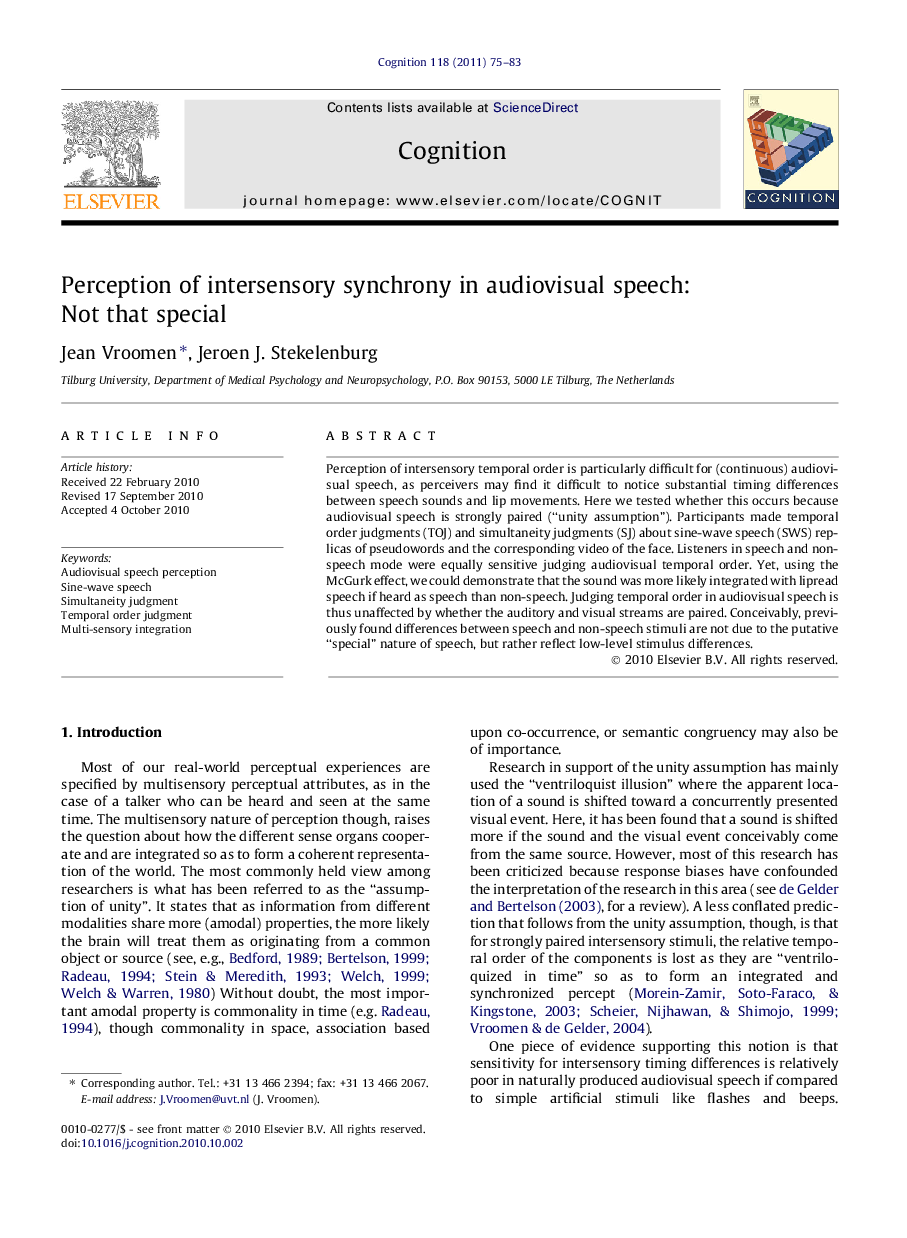| Article ID | Journal | Published Year | Pages | File Type |
|---|---|---|---|---|
| 926629 | Cognition | 2011 | 9 Pages |
Perception of intersensory temporal order is particularly difficult for (continuous) audiovisual speech, as perceivers may find it difficult to notice substantial timing differences between speech sounds and lip movements. Here we tested whether this occurs because audiovisual speech is strongly paired (“unity assumption”). Participants made temporal order judgments (TOJ) and simultaneity judgments (SJ) about sine-wave speech (SWS) replicas of pseudowords and the corresponding video of the face. Listeners in speech and non-speech mode were equally sensitive judging audiovisual temporal order. Yet, using the McGurk effect, we could demonstrate that the sound was more likely integrated with lipread speech if heard as speech than non-speech. Judging temporal order in audiovisual speech is thus unaffected by whether the auditory and visual streams are paired. Conceivably, previously found differences between speech and non-speech stimuli are not due to the putative “special” nature of speech, but rather reflect low-level stimulus differences.
